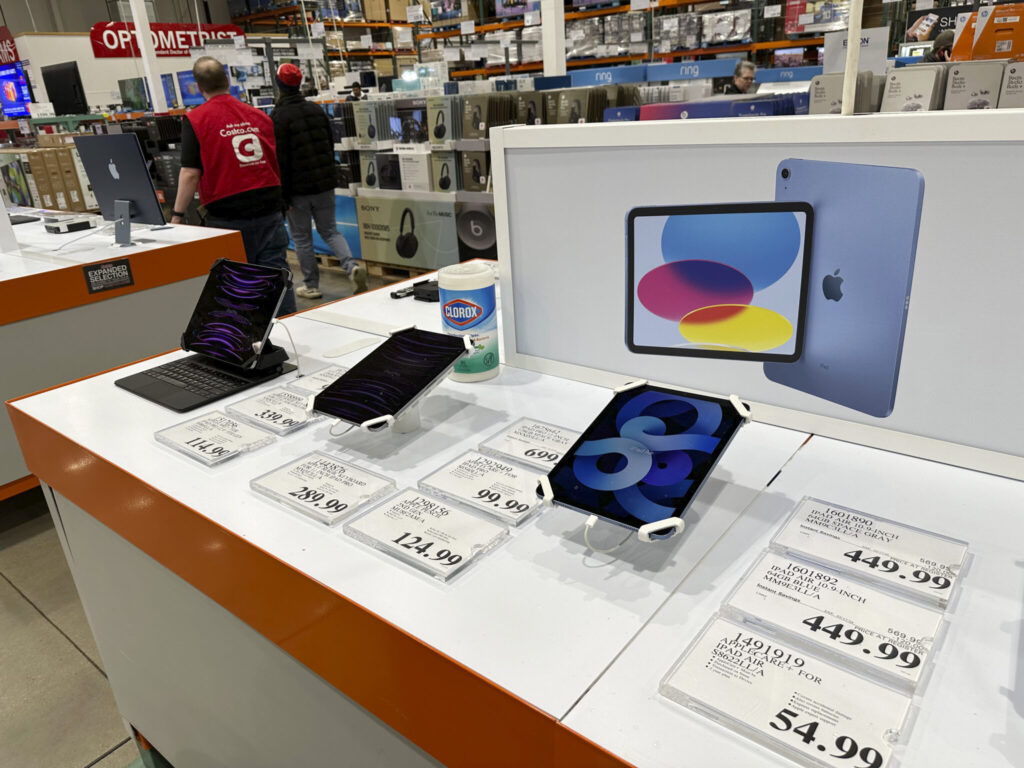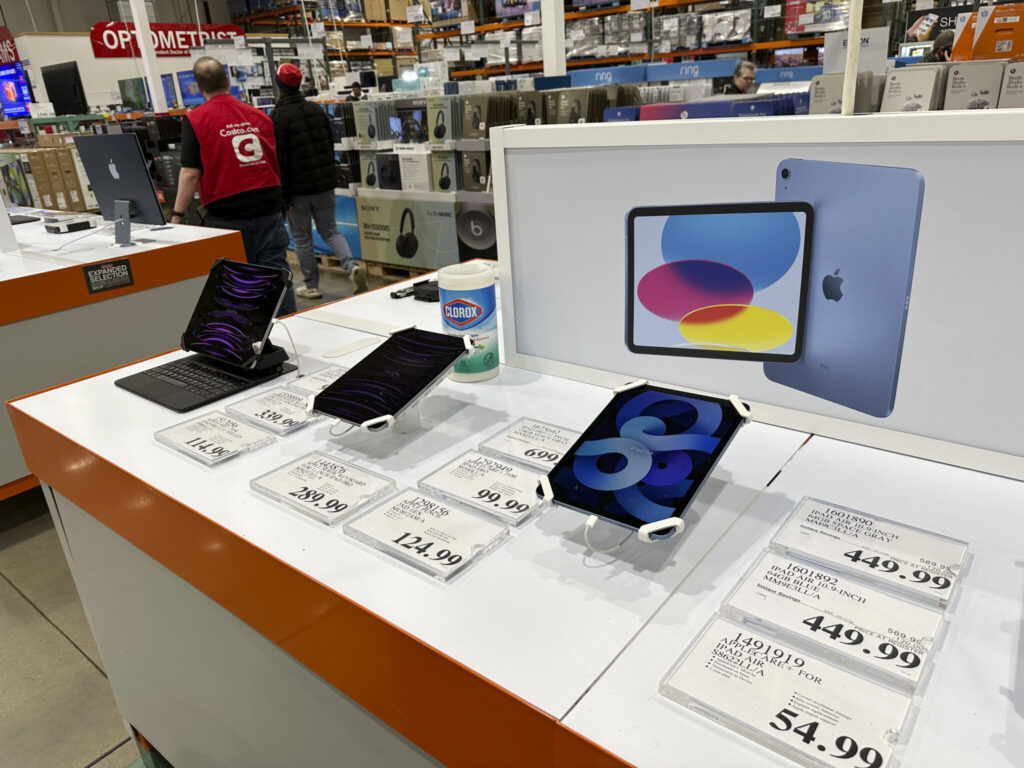Consumer inflation remained persistently high last month, boosted by gas, rents, auto insurance and other items, the government said Wednesday in a report that will likely give pause to the Federal Reserve as it weighs when and by how much to cut interest rates this year. Prices outside the volatile food and energy categories rose 0.4% from February to March, the same accelerated pace as in the previous month. Measured from a year earlier, these core prices were up 3.8%, unchanged from the year-over-year rise in February. The Fed closely tracks core prices because they tend to provide a good read of where inflation is headed.
Quick Read
- Persistent Inflation: The U.S. experienced another month of high inflation in March, with core prices (excluding food and energy) increasing by 0.4% from February and marking a 3.8% rise from the previous year, consistent with February’s year-over-year increase.
- Federal Reserve’s Dilemma: The ongoing high inflation readings challenge the Federal Reserve’s earlier projections of reducing interest rates three times this year, with officials indicating a cautious approach given the economy’s strength.
- Political Implications: High inflation rates could impact President Biden’s re-election campaign, as critics attribute the inflation to his policies, despite a robust job market and recovering stock market.
- Economist’s Insight: Kathy Bostjancic from Nationwide suggests the continuous high inflation could delay the Fed’s rate cuts, possibly pushing them to September or even the next year, contrary to earlier expectations.
- Market Reaction: In response to the inflation report, stock futures fell, and bond yields rose, indicating concerns that the Fed might postpone interest rate cuts.
- Overall Price Increases: The overall consumer prices rose by 0.4% from February to March, with significant increases in gas, clothing, and auto insurance prices.
- Food Price Stability: Grocery prices remained stable last month, offering some relief after significant food price increases in the past.
- Pandemic’s Inflationary Impact: Inflation soared post-pandemic, with the peak reaching 9.1% in June 2022, and although it has declined, prices remain significantly higher than pre-pandemic levels.
- Fed’s Rate Cut Outlook: Earlier optimism for multiple Fed rate cuts in 2024 has been tempered by recent inflation data and economic indicators, leading to a reconsideration of the number and timing of rate reductions.
- Economic Strength and Rate Cuts: Strong economic indicators, including increased hiring and factory output, present a challenge to the rationale for cutting rates, raising questions about the Fed’s next moves in light of sustained economic growth and inflation.
The Associated Press has the story:
US inflation up again in March, a sign that price pressures remain elevated
Newslooks- WASHINGTON (AP) —
Consumer inflation remained persistently high last month, boosted by gas, rents, auto insurance and other items, the government said Wednesday in a report that will likely give pause to the Federal Reserve as it weighs when and by how much to cut interest rates this year.
Prices outside the volatile food and energy categories rose 0.4% from February to March, the same accelerated pace as in the previous month. Measured from a year earlier, these core prices were up 3.8%, unchanged from the year-over-year rise in February. The Fed closely tracks core prices because they tend to provide a good read of where inflation is headed.

The March figures, the third straight month of inflation readings well above the Fed’s target, provide concerning evidence that inflation is stuck at an elevated level after having steadily dropped in the second half of 2023. The higher inflation measures threaten to torpedo the prospect of multiple interest rate cuts this year. Fed officials have made clear that with the economy healthy, they’re in no rush to cut their benchmark rate despite their earlier projections that they would reduce rates three times this year.
The figures will likely disappoint the White House as well, with Republican critics of President Joe Biden who have sought to pin the blame for high prices on the president and use it as a cudgel to derail his re-election bid. Polls show that despite a healthy job market, a near-record-high stock market and the steady drop in inflation, many Americans blame Biden for high prices.

The March inflation report “pours cold water on the view that the faster readings in January and February simply represented the start of new-year price increases that were not likely to persist,” Kathy Bostjancic, chief economist at Nationwide, said in a research note. “The lack of moderation in inflation will undermine Fed officials’ confidence that inflation is on a sustainable course back to 2% and likely delays rate cuts to September at the earliest and could push off rate reductions to next year.”
On Wall Street, traders sent stock futures tumbling and bond yields rising, reflecting fear that the Fed may delay interest rate cuts indefinitely.
Chair Jerome Powell has stressed in recent months that the Fed’s policymakers need more confidence that inflation is steadily slowing to the Fed’s 2% target. Powell’s stance has elevated the profile of the monthly inflation reports, which can determine when and by how much — or even whether — the Fed will reduce its key rate this year. Rate cuts would lead, over time, to lower borrowing costs for businesses and consumers and could also fuel a stock market rally.

Overall consumer prices rose 0.4% from February to March, the same as in the previous month. Compared with 12 months earlier, prices rose 3.5%, up from a year-over-year figure of 3.2% in February.
Gas prices surged 1.7% from February to March and clothing costs 0.7%. The average cost of auto insurance jumped 2.6% last month and is up a dramatic 22% from a year ago, partly reflecting purchases of higher-priced vehicles.
Grocery costs, though, were unchanged last month and are 2.2% higher than they were a year ago, providing some relief to consumers after the huge spikes in food prices in 2022 and early 2023.
The inflation surge that followed the pandemic jacked up the costs of food, gas, rent and many other items. Though inflation has since plummeted from its peak of 9.1% in June 2022, average prices are still well above where they were before the pandemic.

Early this year, Wall Street traders had projected that the Fed would cut its key rate up to six or seven times in 2024. In March, Fed officials signaled that they envisioned three rate cuts. But elevated inflation readings for January and February — along with signs that economic growth remains healthy — led several Fed officials to suggest that fewer rate cuts may occur this year.
Last month, employers ramped up hiring, and the unemployment rate fell to a low 3.8% from 3.9%. A report on manufacturing also showed that factory output expanded after more than a year of contraction.
Such signs of economic vigor have also complicated the prospect of Fed rate cuts, which typically occur when the economy stumbles. With growth healthy, some economists have asked, why cut rates at all? A strong economy also means that the Fed’s policymakers can take their time to consider when and by how much to reduce borrowing costs for consumers and businesses.
At a news conference last month, Powell said that robust hiring, on its own, wouldn’t require the Fed to delay rate cuts. He noted that even though job gains were strong last year, inflation still tumbled thanks in large part to a surge of available workers, mostly from increased immigration.
Some other policymakers, though, said that recent data had given them pause. Lorie Logan, president of the Federal Reserve Bank of Dallas, said last week that she thought it was too soon to consider rate cuts.







